Wednesday, June 22, 2011
Terrific Terrariums - Mini Ecosystem
Look how cute and easy these self maintaining little ecosystems are…aka terrariums! Terrariums are small indoor gardens that are perfect for people who want to decorate their space with plants but don’t have time or the know how to take care of them. Or, like in my case, have kids and animals that might eat or pick off the pretty little leaves :0)
Did you know that closed lid terrariums recycle their own moisture so they rarely need to be watered? On average, most terrariums can go one to two months before more water is needed.
You can find supplies to make a terrarium in many different stores or with what you have around the house. For example: the rocks and stones can be found at the craft store, home improvement store and the pet store. I had some fish tank gravel stashed in the garage, so I just used that.
Here is a supplies list:
- a verity of plants that require the same type of care. For example: use plants that require partial sun and moist soil. Never mix plants that have different growing requirements.
- potting soil
- rocks and gravel
- a container of water
- dried moss of any kind
- any clear container with lid
- small decorative accents
- bucket or bowl to mix spoil in
- spray bottle to mist the plants
- plastic or paper to cover your work area
- plant charcoal or loose carbon from the pet store
- a piece of screen or moss to keep the dirt form falling into the rocks
I bought these glass jars at Hobby Lobby for $2.99. They were originally $4.99 and were on an in-store sell for 40% off.
The first step to a good terrarium is to have a good drainage layer. Layer about an inch of large stones in the bottom of the container. Next add a few smaller stones to help fill in some of the gaps.
Step 2: Cut a piece of screen or moss to cover the rocks. Make sure that the piece of screen or moss is big enough to cover all the rocks and is touching the sides of the container, you want to avoid any dirt falling into the rocks.
Step 3: Pour a half inch layer of plant charcoal or carbon from the pet store onto the screen or moss, don’t worry if the charcoal or carbon falls through a bit and into the rocks. This layer will filter the water from any impurities and odor before going to the drainage area in the rocks.
Step 4: Pour a handful of plant charcoal or carbon from the pet store into the potting soil. Add a small amount of water, just enough to moisten the potting soil and mix everything together.
You will know that you have the right consistency when you are able to form a loose ball that will easily fall apart.
Step 5: Pour a two inch layer of soil mixture into the container. You are going to set your plants on top of this and then add soil around the plants later.
Step 6: Remove plants from their original containers, carefully remove any yellow or brown foliage and gently remove must of the extra soil from around the roots. Place your plants into the container, pour soil around them and top with a bit a moss to help keep the moisture in the soil. You can also use decorative rocks instead of moss.
Here you can see that my niece and I added a small decorative mushroom.
Step 7: After you have added all your decorative pieces and made sure that your plants look like you want them to, mist a small amount of water onto the plant leaves and onto the insides of the container to help remove any bits of soil that might be stuck on the container where you don’t want it. Make sure not to over water!
Final step: Place the lid onto the glass container. Make sure to put your terrarium in a place where it can get sunlight - but not direct sunlight. In direct sunlight, the glass will magnify the heat and cook the plants!
While the water you already put into the terrarium should be enough to sustain the ecosystem, make sure you monitor the health of the plants for the next few days. If the plants look over watered, just remove the lid to allow some of the water to evaporate. If the plants look to dry add a bite more water.
How to maintain your terrarium.
- Place in a bright area but not in direct sunlight.
- Water lightly only when the soil is dry.
- When the plants get to big, pinch off the new growth.
- Do not fertilizer.
I hope you enjoy your new terrarium and have fun with it too. Terrariums can be a great tool in teaching kids about the ecosystem and the water cycle.






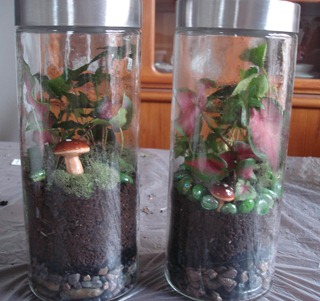
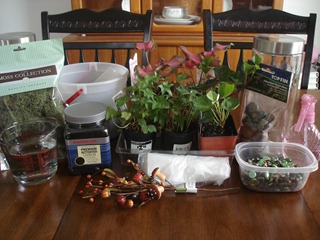
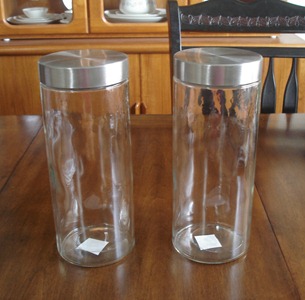
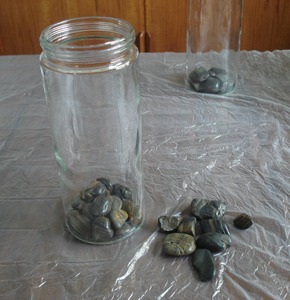
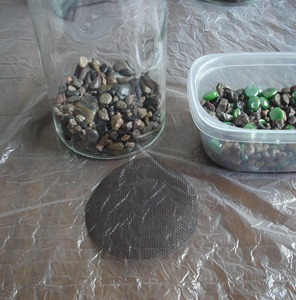
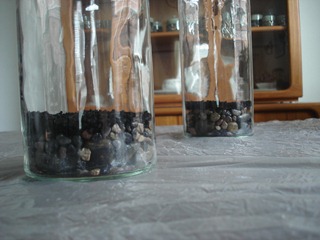
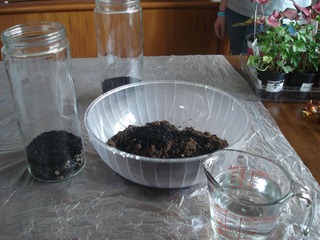
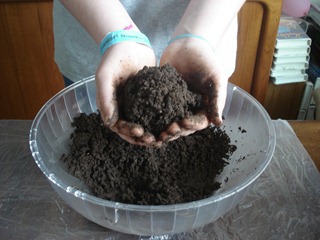
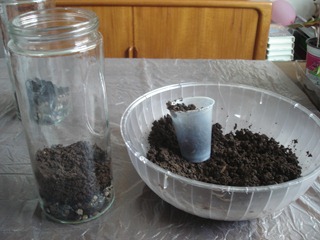
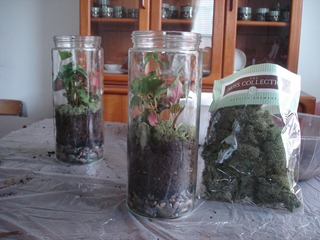
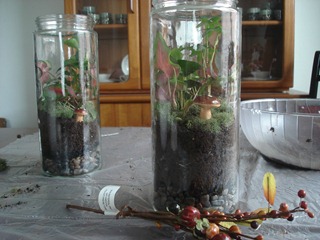
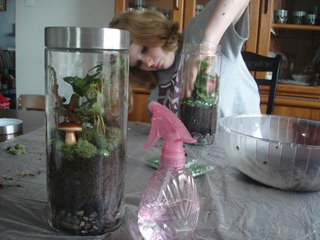
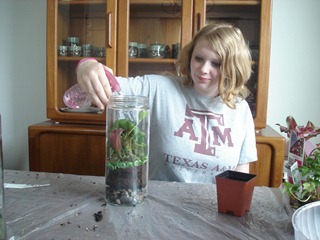
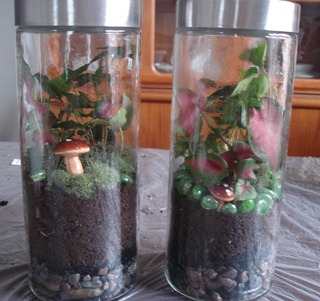


0 comments:
Post a Comment